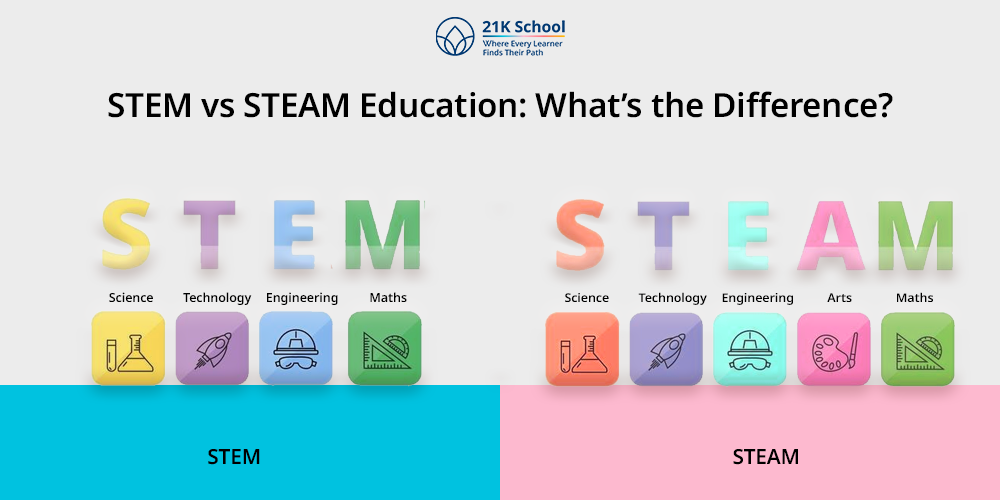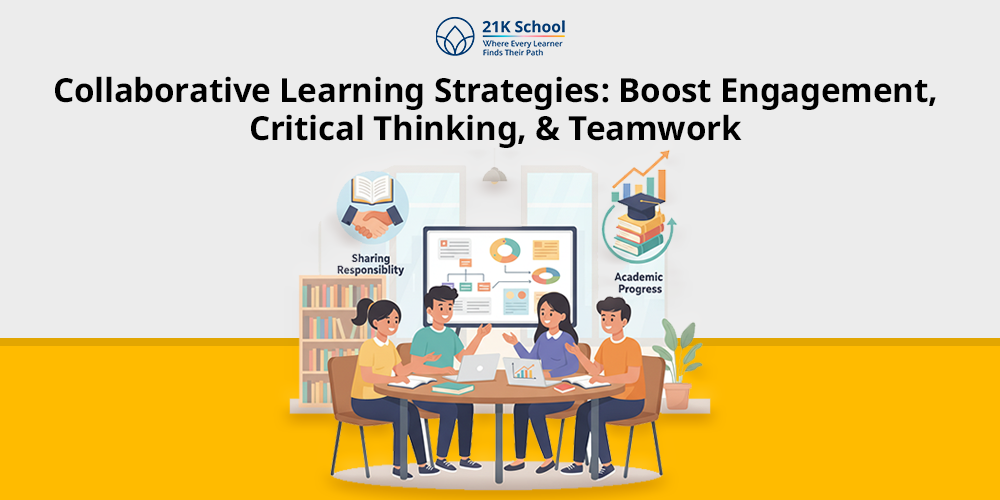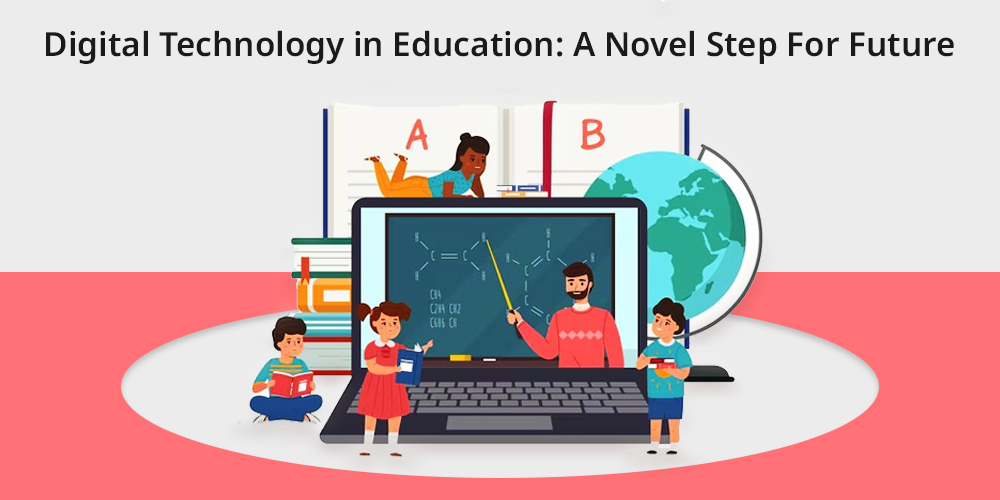
Digital technology has revolutionized learning because education is now even more accessible, interactive and personalised.
Tools like online platforms, AI, and virtual classrooms have extended educating prospects, particularly in the recent time of remote learning.
In addition to these pros, there are cons like the digital divide, cyber threats, and virtual competencies shortage among teachers. These barriers can frustrate integration of technology within the education sector, and worsen the existent inequalities.
This article looks at the negatives of digital technology in education , its future potential, and its influence on the education sphere.
By considering the problems and opportunities, digital tools are changing the nature of education both now and in the future.
Contents
- What is Digital Technology in Education?
- History of Digital Technology in Education
- Types of Digital Technology in Education
- Importance of Digital Technology in Education
- Use of Digital Technology in Education
- Role of Digital Technology in Education
- Examples of Digital Technology in Education
- Benefits of Digital Technology in Education
- Disadvantages of Digital Technology in Education
- The Future for Digital Technology in Education
- Wrapping Thoughts
What is Digital Technology in Education?
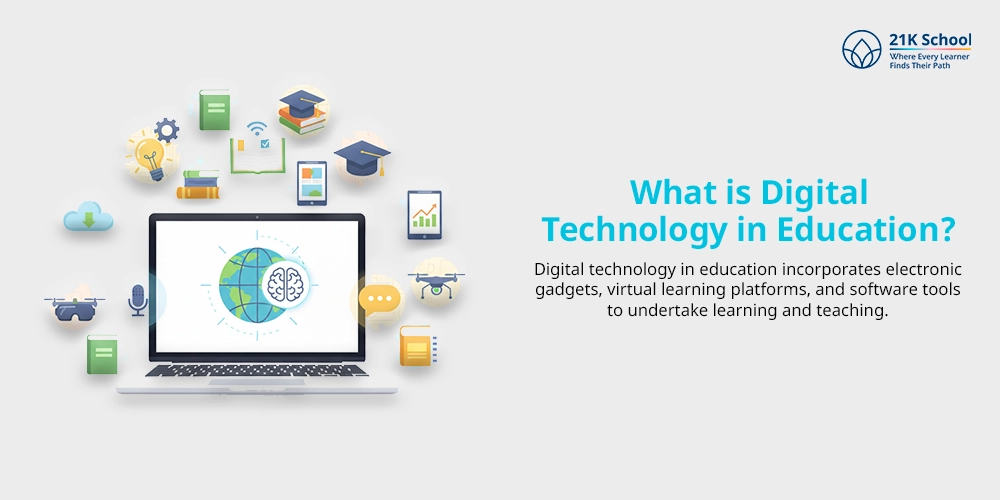
Digital technology in education incorporates electronic gadgets, virtual learning platforms, and software tools to undertake learning and teaching.
These technologies are designed to enhance accessibility, engage, and interact in education.
They range from entry level tools to the ones at the higher end. From basic tools like computers, tablets to more complex technologies like AI, VR, LMS.
In school, there are various manifestations of digital technology. It encompasses e-learning platforms that offer a regulated learning environment for the students.
Learners can use content, and communicate with teachers and fellow learners through these platforms. Such training comes along with educational apps, websites, and multimedia tools that encourage students to learn in a fun way.
Digital technology is also not limited to the classroom. It enables students and teachers to connect and work together remotely, creating enormous opportunities for education worldwide.
History of Digital Technology in Education
The history of digital technologies in education goes back to the late 20th century. The first major change occurred when computers were introduced in the classrooms in the 1980s.
Personal computers were mostly used for educational games, and basic word processing. Yet they paved the way for further advances in technological integration throughout the decades.
The key role of the internet in education started to be developed from the 1990s. The arrival of online resources [educational websites, learning management systems (LMS)] opened new opportunities for online cooperation.
With the development of the World Wide Web, enormous volumes of information were uncovered. And for this students and educators now had access to resources and study material harder to come by.
Digital technology found its roots in education in the early 2000s. It was steeped in the realization of e-learning platforms like Moodle, and platforms for online courses like Coursera.
Students could now study from home, in their own time, and from anywhere across the globe.
Traditional chalkboards were removed in favor of interactive technologies like smart boards and digital projectors, making lessons dynamic and interesting.
By the 2010s, mobile devices like smartphones and tablets continued to break the walls of digital learning . Now students could download education materials on the go.
With the advent of artificial intelligence, machine learning alongside virtual reality, digital technology has entered a new horizon. Opening up avenues for ludic, personalized learning, and based-on-data decision making within an educational environment.
Types of Digital Technology in Education
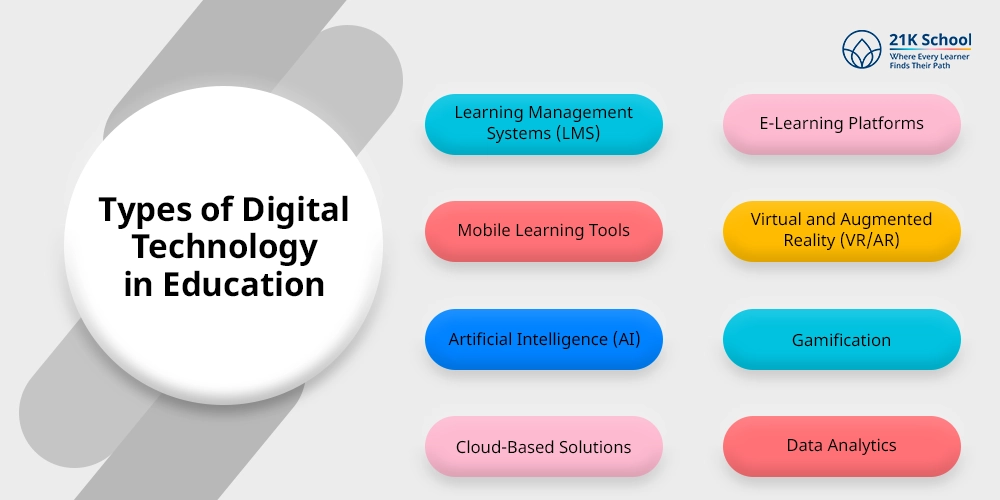
The range of digital technology for learning is also broad, as many tools and platforms are developed to facilitate learning. Some of the most common and affecting forms of digital technology that are utilized in the education process today, include:
1. Learning Management Systems (LMS)
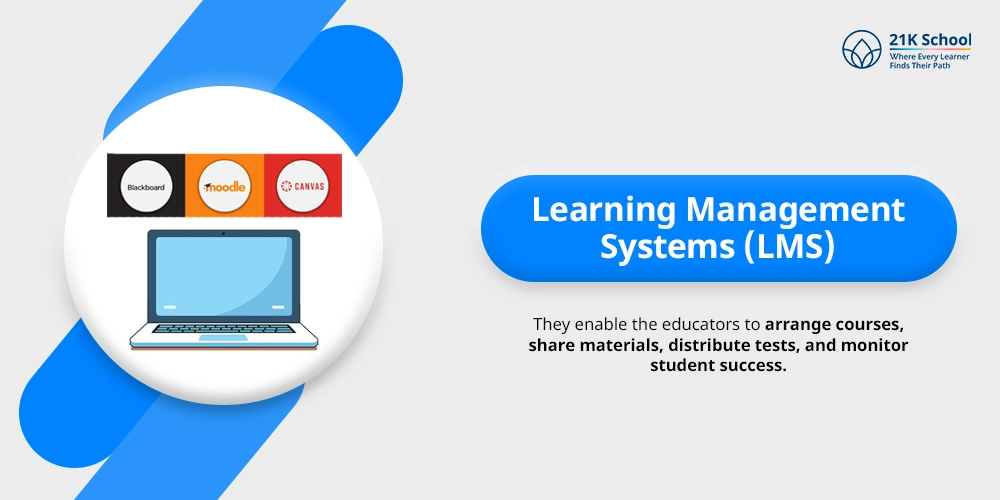
Pages or websites such as Learning Management Systems (LMS), Moodle, Canvas, and Blackboard are the core of online learning They enable the educators to arrange courses, share materials, distribute tests, and monitor student success.
LMS platforms allow for easy communication between students and teachers, making the learning process interactive and involving.
2. E-Learning Platforms
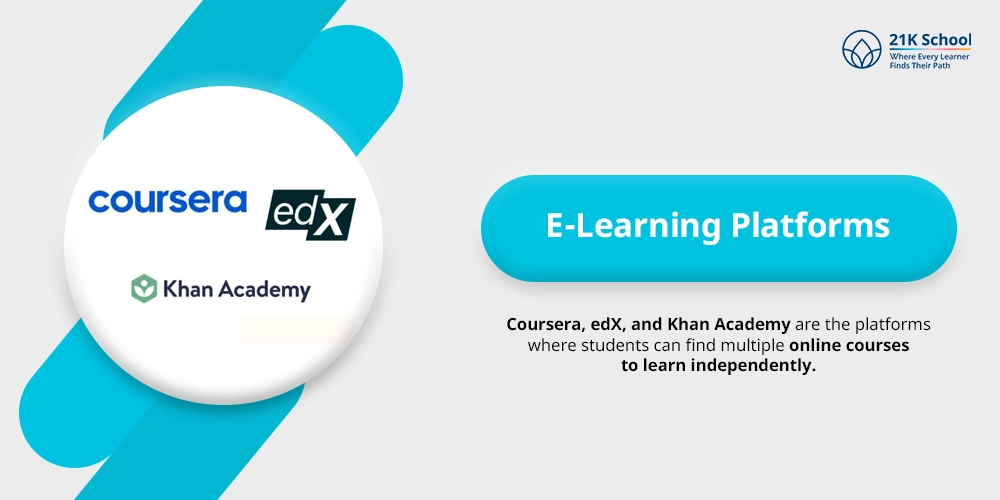
Coursera, edX, and Khan Academy are the platforms where students can find multiple online courses to learn independently. These platforms also assist students to get certifications and find new skills.
Such platforms usually collaborate with the best universities and institutions, offering quality education to people all over the world.
3. Mobile Learning Tools
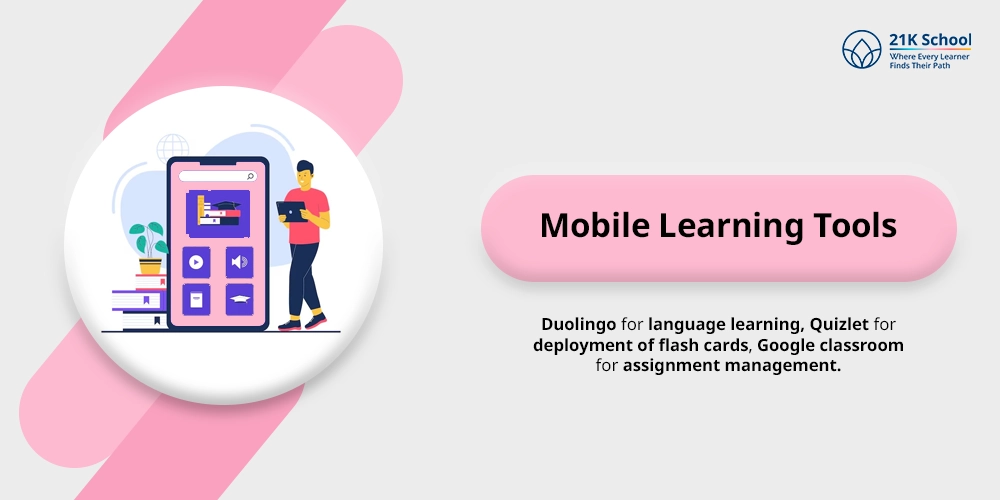
Due to the prevalence of smartphones, mobile learning apps are becoming a popular method of improving the learning of students.
These apps make it easier for the students to access educational material on mobiles.
For example: Duolingo for language learning, Quizlet for deployment of flash cards, Google classroom for assignment management.
4. Virtual and Augmented Reality (VR/AR)
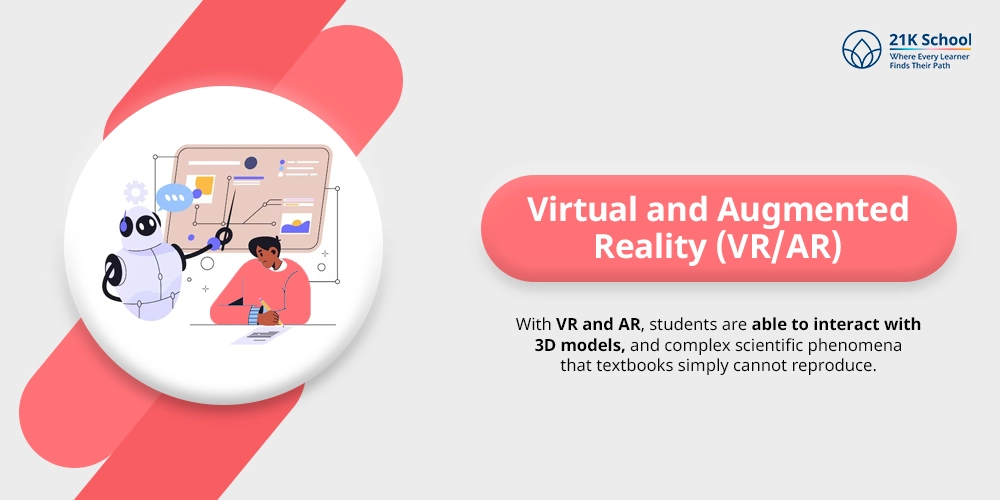
Augmented and virtual reality tools have started to change the way students deal with educational materials.
Sites such as Google Expeditions and Oculus VR offer immersive learning solutions in fields like history, science, and geography.
With VR and AR, students are able to interact with 3D models, and complex scientific phenomena that textbooks simply cannot reproduce.
5. Artificial Intelligence (AI)
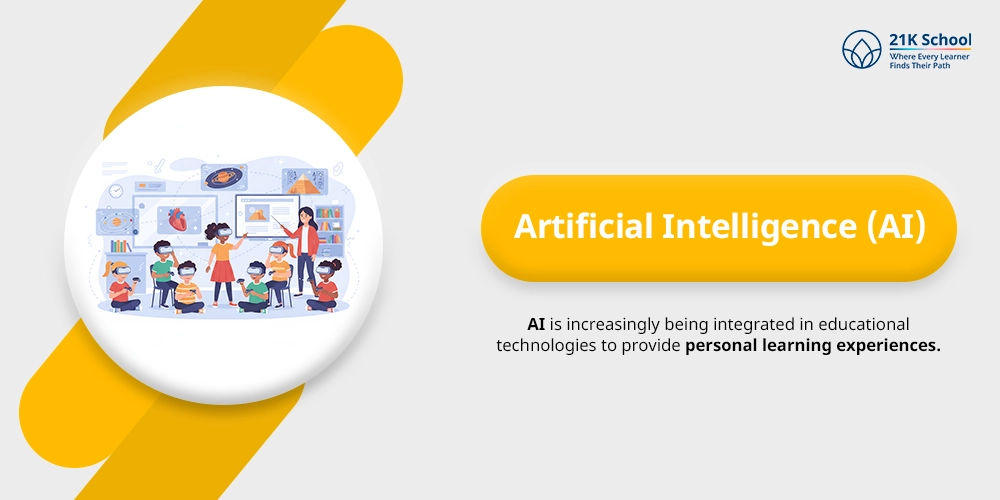
AI is increasingly being integrated in educational technologies to provide personal learning experiences.
Intelligent adaptive learning platforms are able to evaluate student performance and adjust content to cater for their individual needs.
AI tools such as chatbots may also provide real-time feedback and help with administrative tasks, so that the teachers can concentrate more on teaching.
6. Gamification
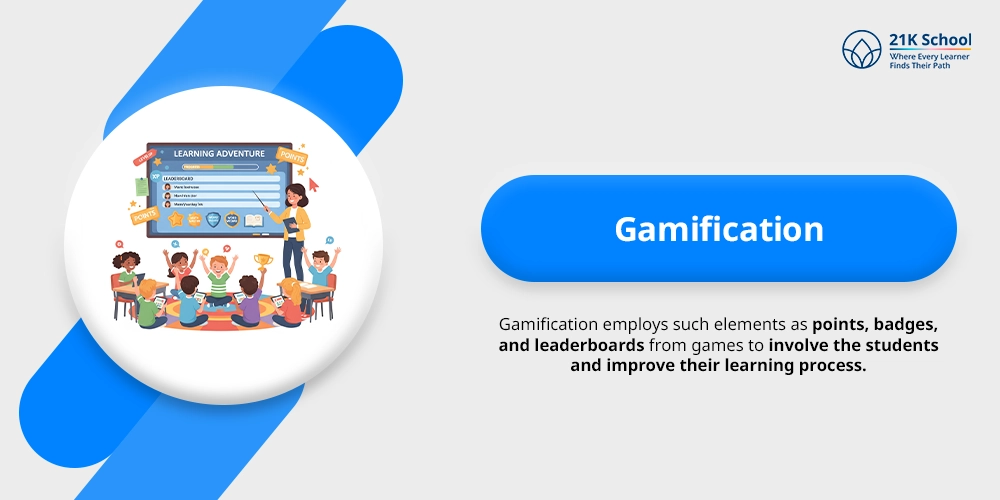
Gamification employs such elements as points, badges, and leaderboards from games to involve the students and improve their learning process.
Sites such as Kahoot! and Classcraft apply gamified methods to make learning exciting and interactive, engagement, and intrigue included.
You can also read on game-based learning to understand more of gamification and its applications.
7. Cloud-Based Solutions
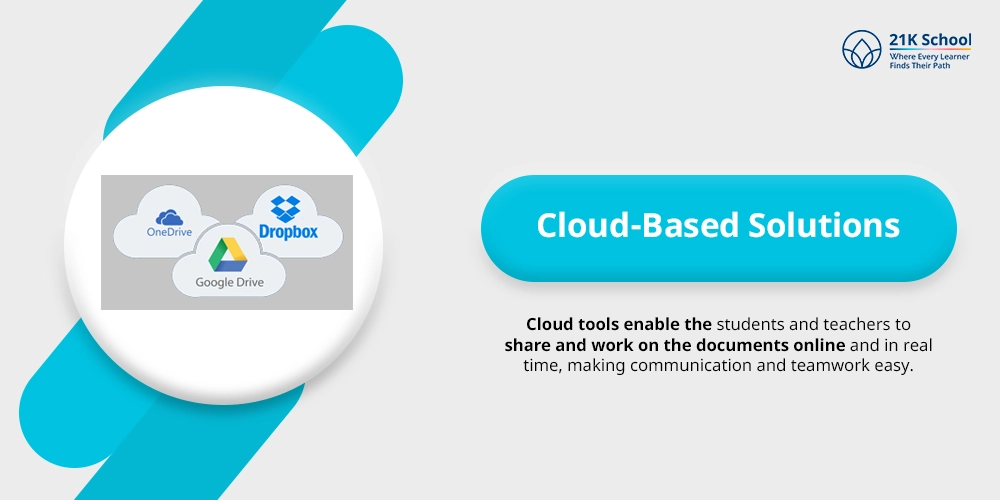
The use of cloud technology such as Google Drive, Microsoft OneDrive and Dropbox has become a necessity in education.
Cloud tools enable the students and teachers to share and work on the documents online and in real time, making communication and teamwork easy.
8. Data Analytics
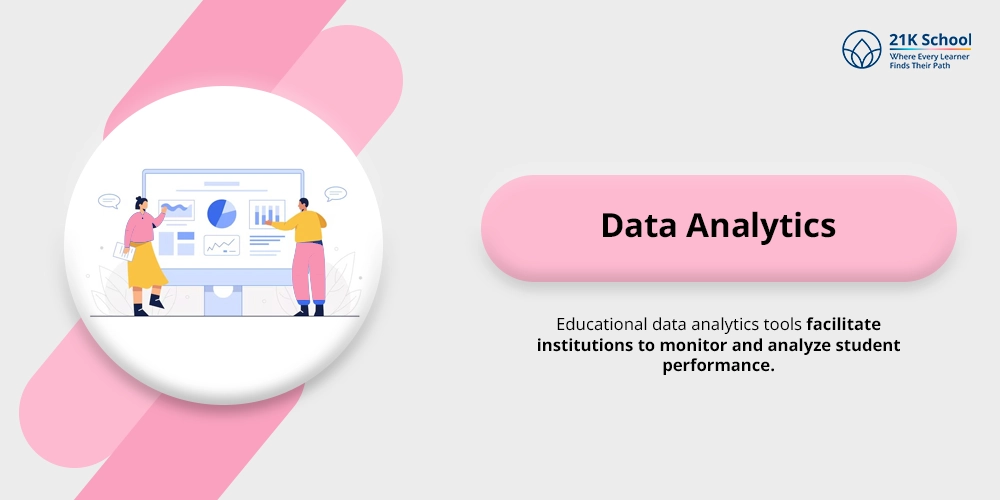
Educational data analytics tools facilitate institutions to monitor and analyze student performance.
These tools find learning gaps and provide hints about the effectiveness of teaching and organize personalized interventions for student success.
Importance of Digital Technology in Education
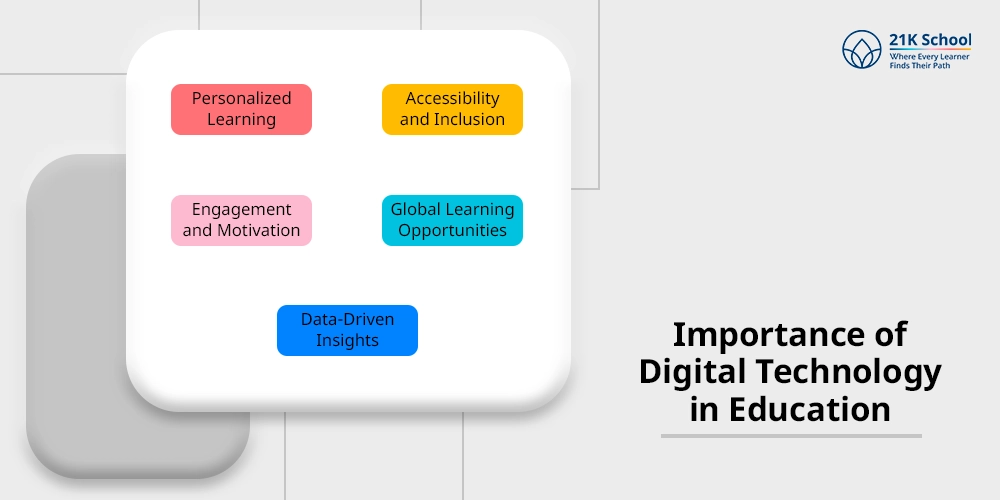
Digital technology is important to education to a great extent. In its continued efforts to revolutionise the way we learn, a lot of advantages are attained of which include:
1. Personalized Learning
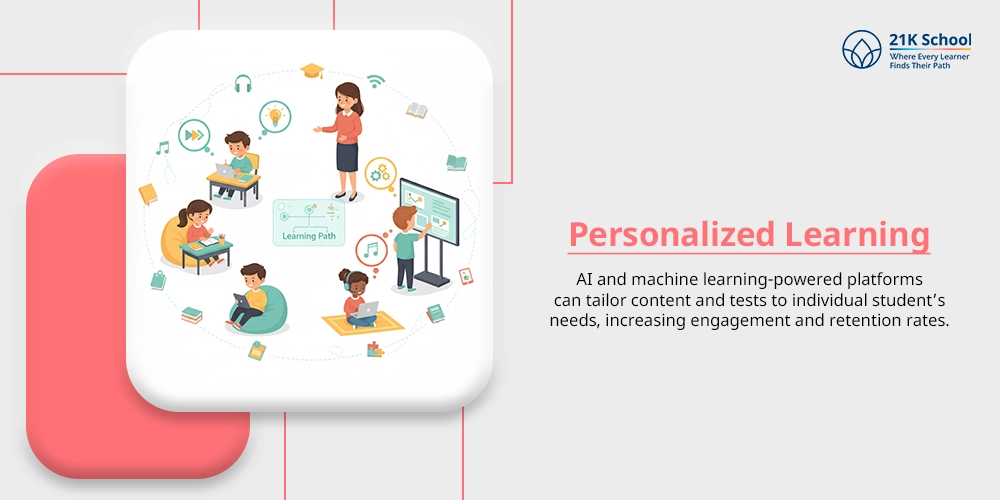
Digital technologies transform the experience of personalized learning for students.
They are able to learn at their own pace and with their peculiar learning type. AI and machine learning-powered platforms can tailor content and tests to individual student’s needs, increasing engagement and retention rates.
2. Accessibility and Inclusion
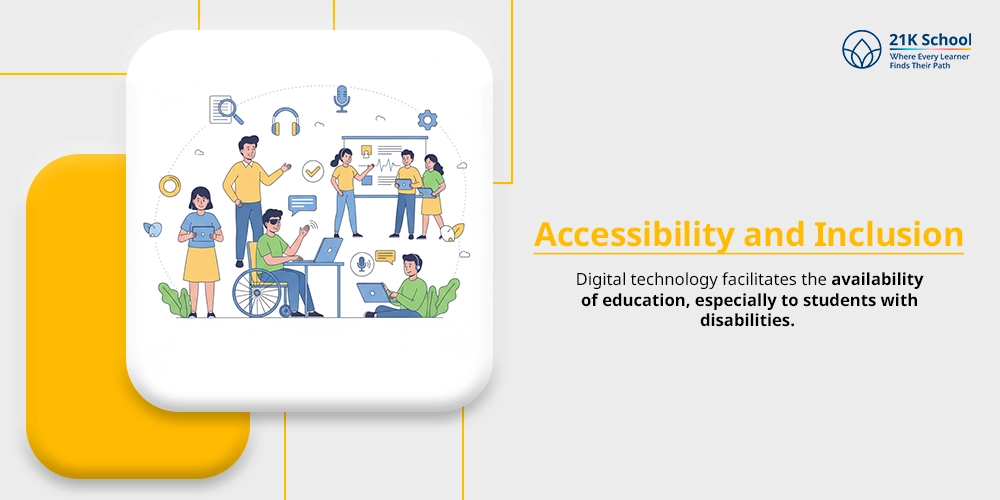
Digital technology facilitates the availability of education, especially to students with disabilities. The use of tools like screen reader, speech recognition programs and caption services help the students with visual or auditory deficits.
It lets them interact with the content meaningfully. Moreover, digital learning platforms make education available to the students in remote places thus removing physical and financial obstacles.
3. Engagement and Motivation
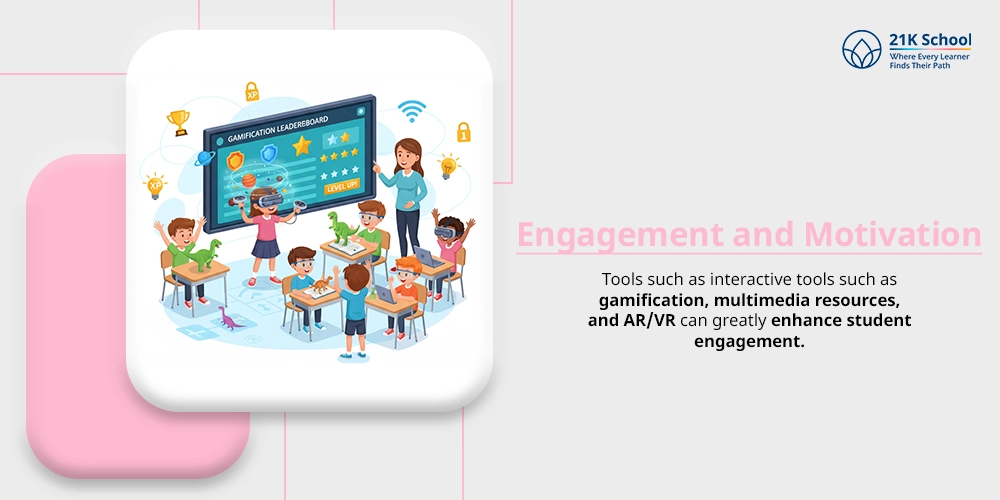
Tools such as interactive tools such as gamification, multimedia resources, and AR/VR can greatly enhance student engagement.
These technologies turn learning from passive activity into an engaging one, thus, making studies more exciting and motivating for students.
4. Global Learning Opportunities
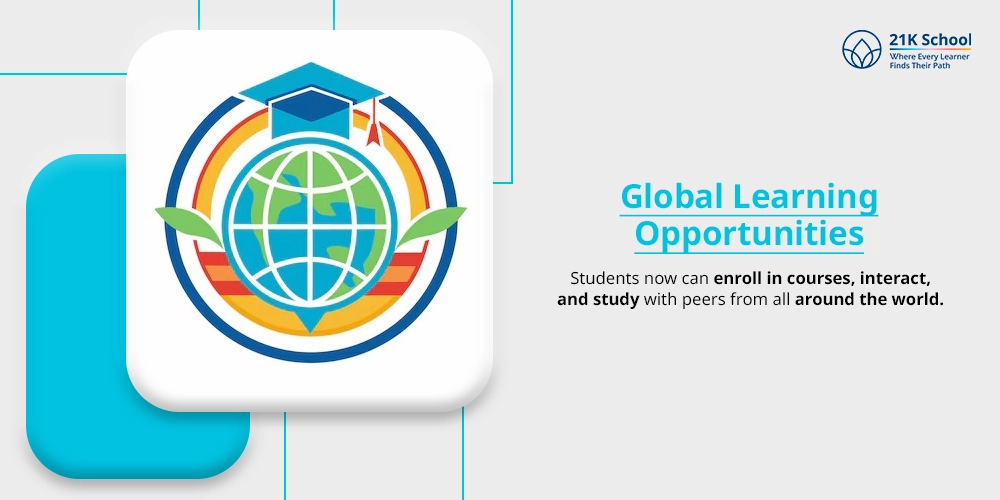
The increased use of online courses for professional development, MOOCs, and digital classrooms has internationalized learning opportunities.
Students now can enroll in courses, interact, and study with peers from all around the world. Thus, enriching their vision and exposure to different cultures and ideas.
5. Data-Driven Insights
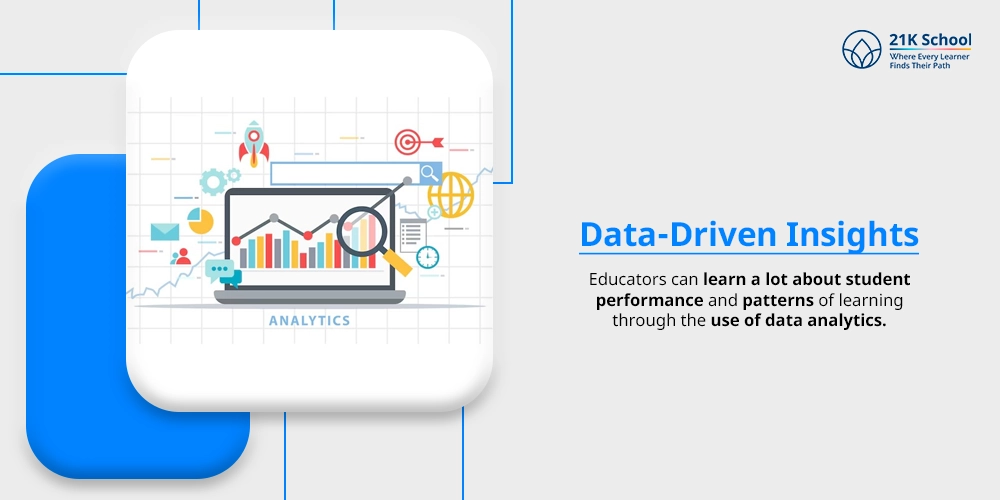
Educators can learn a lot about student performance and patterns of learning through the use of data analytics.
This data enables informed decision-making so that teachers can know where the students need extra assistance and achieve learning goals.
Use of Digital Technology in Education
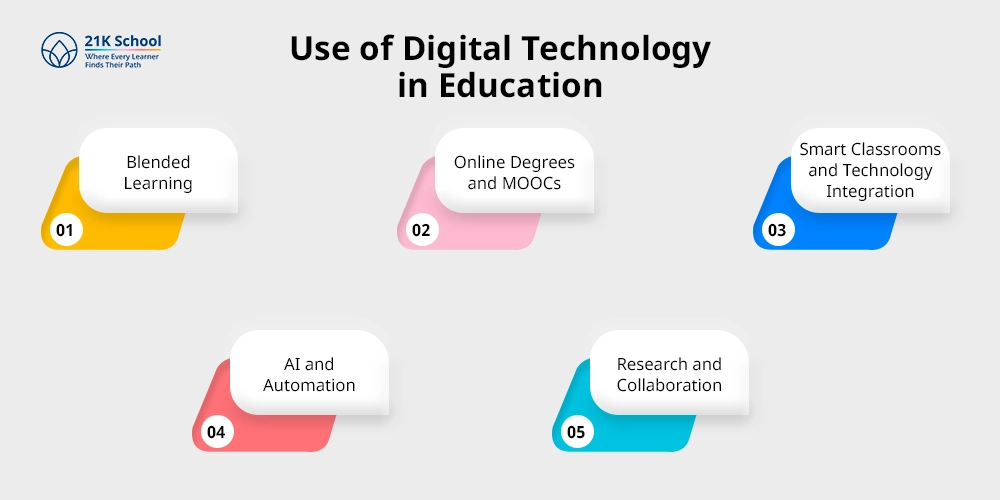
Digital technology in higher education is the new pavement for advances being applied in learning.
The technology goes beyond the traditional schooling but rather involves aspects of administrative work, research and even global collaboration.
1. Blended Learning
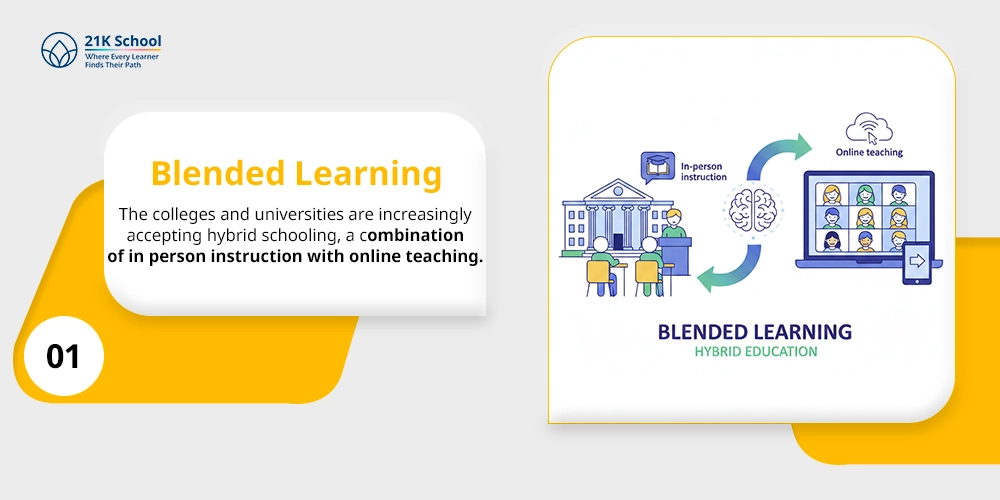
The colleges and universities are increasingly accepting hybrid schooling, a combination of in person instruction with online teaching .
This hybrid strategy enables students to learn remotely but with an advantage of physical interaction with professors and peers.
2. Online Degrees and MOOCs
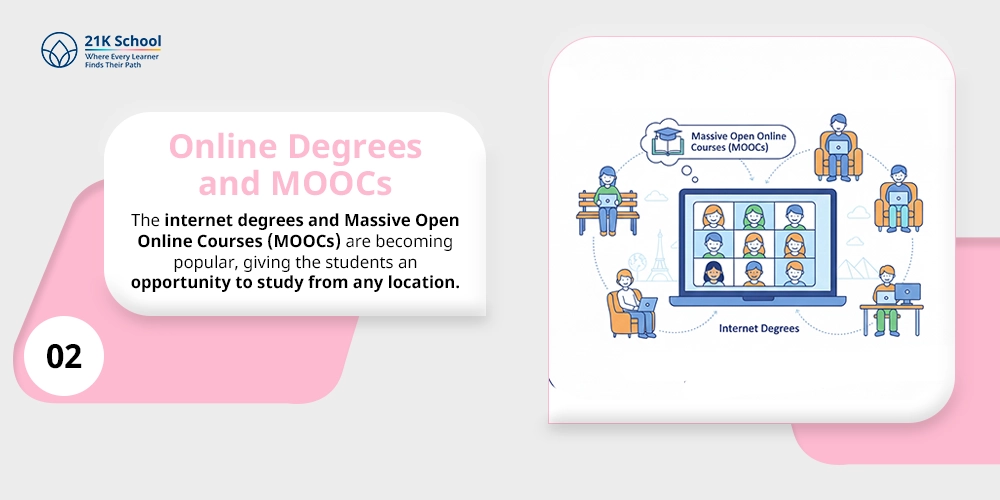
The internet degrees and Massive Open Online Courses (MOOCs) are becoming popular, giving the students an opportunity to study from any location.
Entities such as Coursera and edX offer access to online courses and certificates from the top universities. Thus, giving open access to higher education to a worldwide audience.
3. Smart Classrooms and Technology Integration
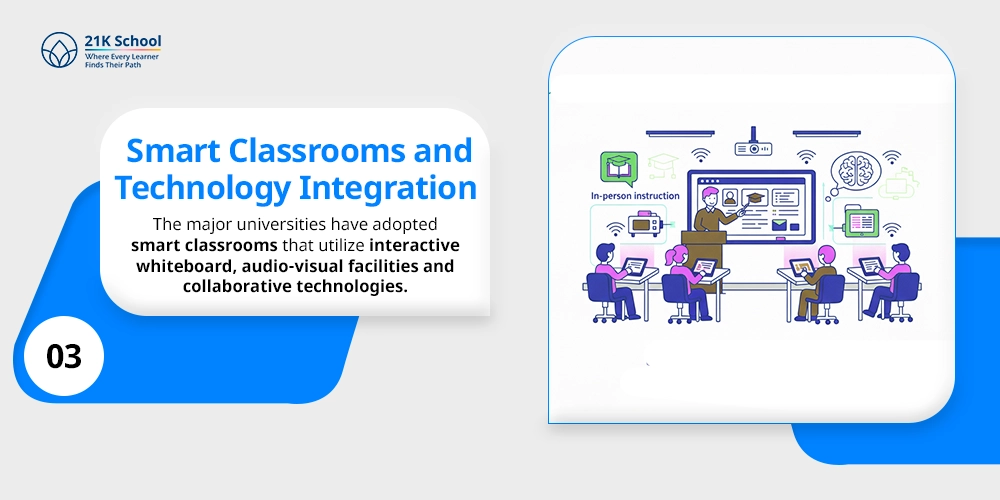
The major universities have adopted smart classrooms that utilize interactive whiteboard, audio-visual facilities and collaborative technologies.
These classrooms are active learning and engagement rooms, where students can take part in live discussion. Learners also view multimedia content and review course materials from any place.
4. AI and Automation
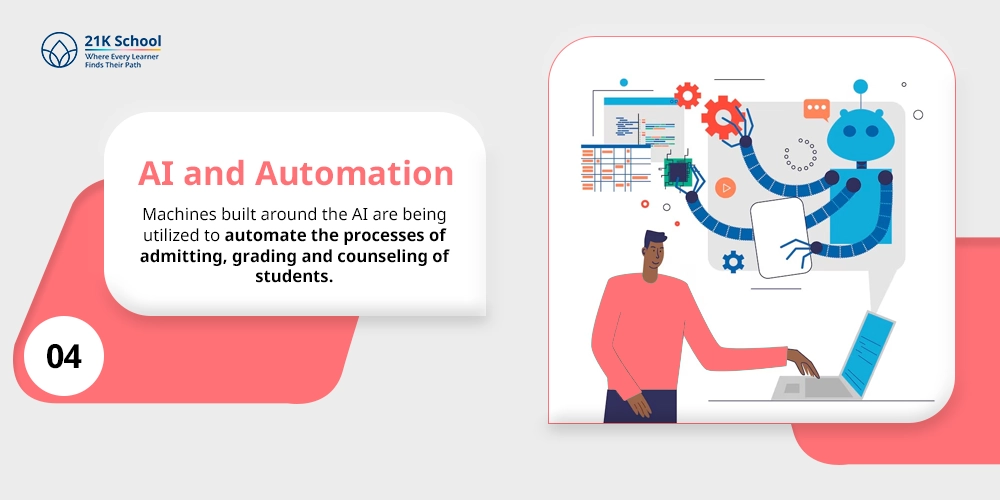
AI and automation are changing the ways administrative tasks are being conducted in higher education.
Machines built around the AI are being utilized to automate the processes of admitting, grading and counseling of students.
Automation tools can also use the student data to predict academic performance and give at-risk students personalized support.
5. Research and Collaboration
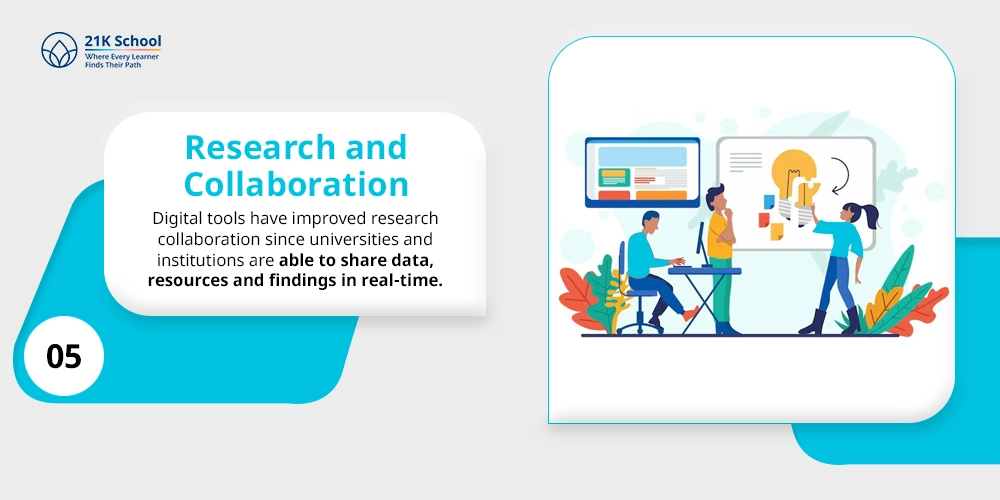
Digital tools have improved research collaboration since universities and institutions are able to share data, resources and findings in real-time.
Scholars can now work with colleagues in other parts of the globe and log into cloud-based research databases. They can also have access to video conferencing, which promotes global academic exchange.
Role of Digital Technology in Education
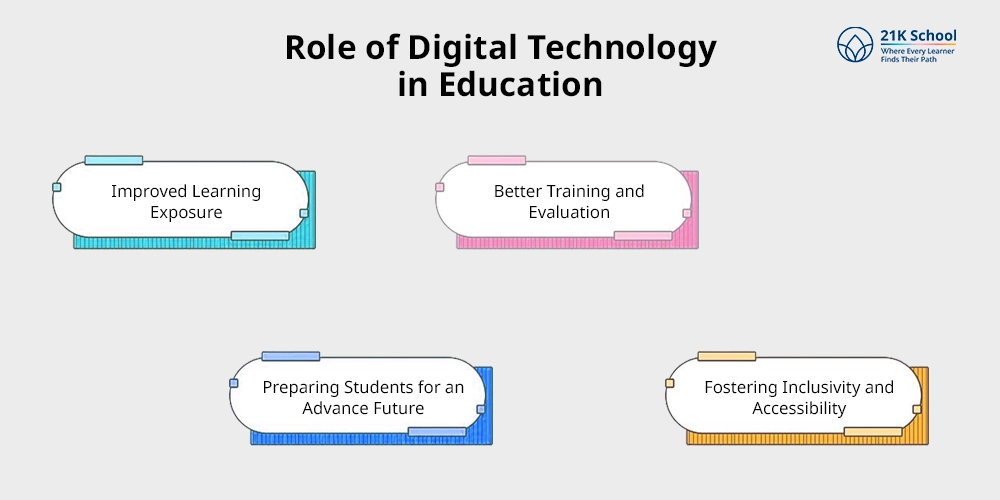
Have a look at the listed below digital technologys role in education :
1. Improved Learning Exposure
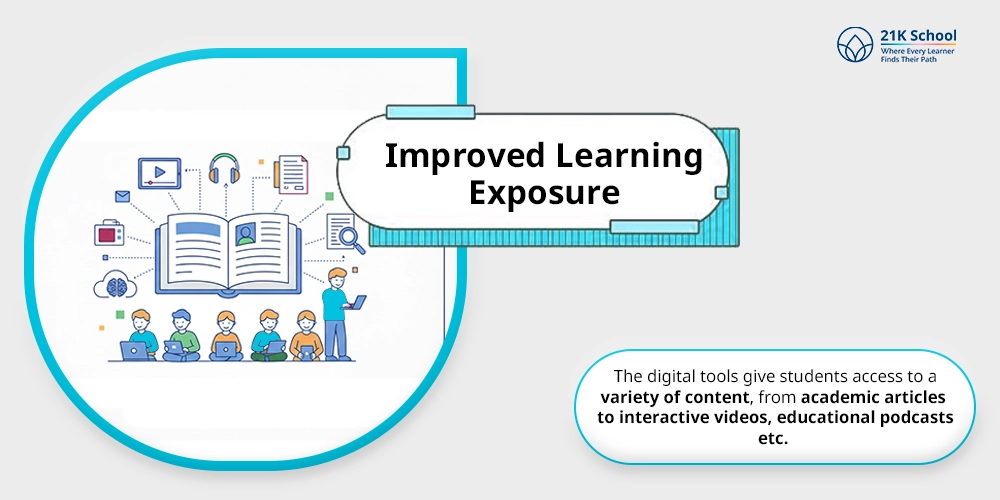
One of the best benefits of digital technology in education is the increase in the number of learning opportunities. The digital tools give students access to a variety of content, from academic articles to interactive videos, educational podcasts etc.
Such exposure adds to their knowledge module. It also gives them exposure to subjects that may not be covered in traditional curriculums.
For example, a student in a remote area can have access to the same resources and courses as a student in one of the major cities, reducing educational gaps.
Besides, digital platforms such as e-learning platforms, MOOCs (Massive Open Online Courses), and virtual libraries enable students to learn beyond the formality of the education system promoting self-directed and lifelong learning.
Such increased attention opens the world for students, allowing them to gain a more wholesome education.
2. Better Training and Evaluation
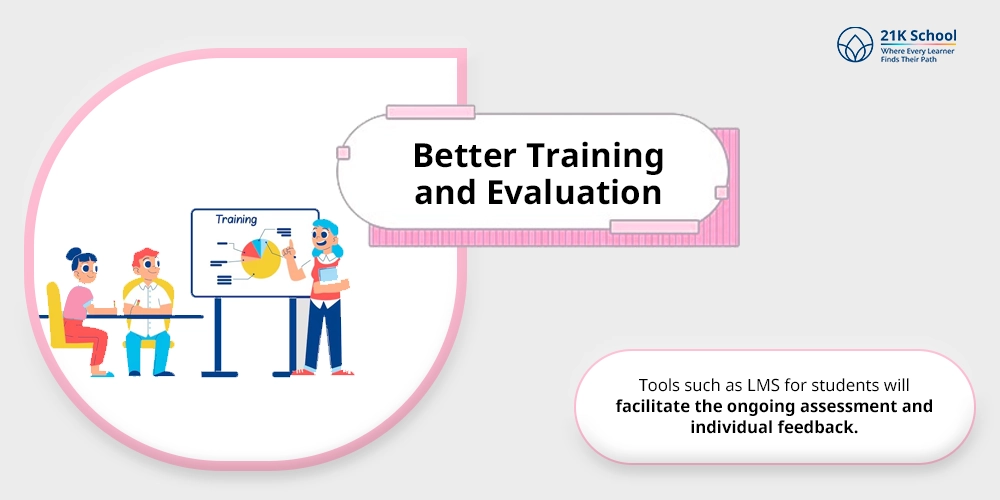
Digital technologies provide a more effective system of training and evaluation for students and teachers. Tools such as LMS for students will facilitate the ongoing assessment and individual feedback. So educators can monitor progress better.
Such systems provide thorough information about the student’s performance, areas where they are performing well, and areas that require improvement.
Digital technology offers educators an opportunity for professional development via online courses, webinars, and online workshops.
This effectively equips the teachers with the latest pedagogical methods and digital literacy skills. Thus, letting them adapt to the use of the technology in the class well.
3. Fostering Inclusivity and Accessibility
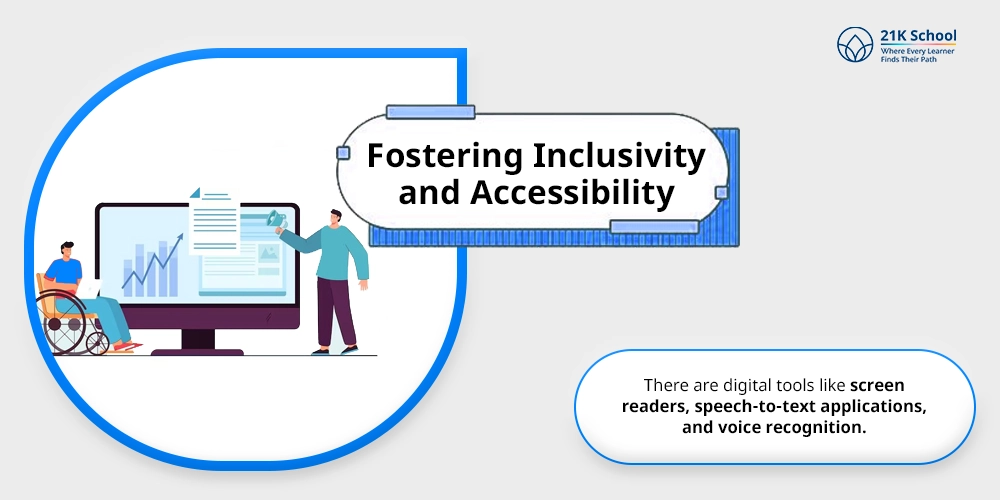
Digital technology has shifted the role at the center of the cause of making education inclusive and accessible. There are digital tools like screen readers, speech-to-text applications, and voice recognition. These tools help to make it easier for students with disabilities to interact with educational content.
Adaptive learning platforms, which alter content according to needs, helps learning-challenged students because of their individualized nature of learning.
Besides, with the Internet, students regardless of their geographical and socio economic differences can have online access. And education reaches those even with no access.
Digital technology eliminates obstacles to education with equal chances for each learner irrespective of place and ability.
4. Preparing Students for an Advance Future
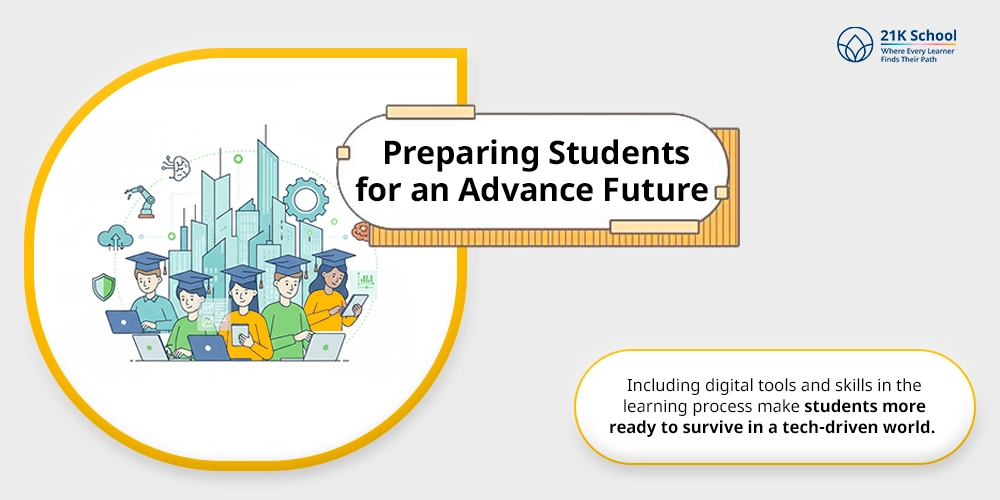
Digital technology is not just enhancing the educational system that exists but training the students toward the digital future. Including digital tools and skills in the learning process make students more ready to survive in a tech-driven world.
Cloud sharing for interaction, learning to code, and data analysis is aiding students to develop competencies, essential in future careers.
In higher education, institutions are extending programs to equip the students to handle the latest technologies. Therefore, artificial intelligence (AI), robotics, and blockchain are likely to fill the job market in the near future.
This way, students are more ready to join the workforce with technical know-how and problem-solving skills for the digital age.
Examples of Digital Technology in Education
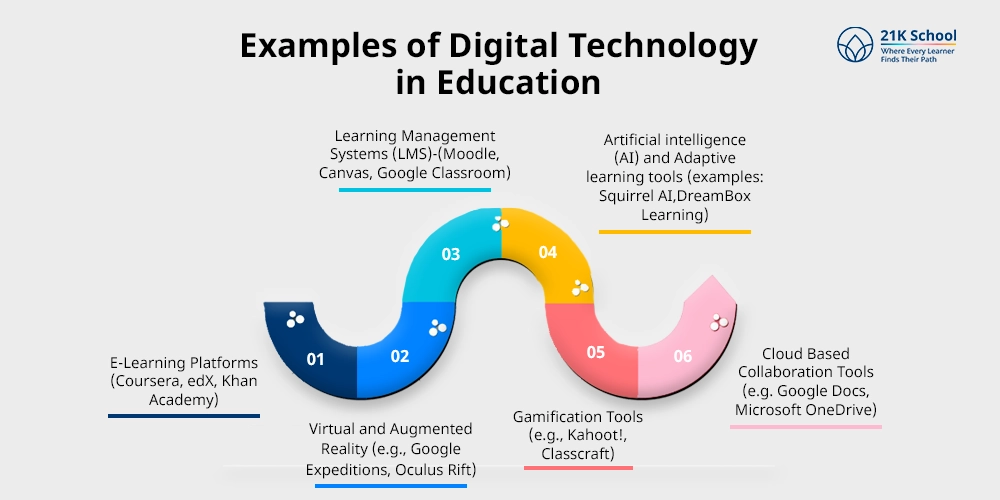
The scope of the digital technology used in education is very wide. Some prominent examples include:
- E-Learning Platforms (Coursera, edX, Khan Academy)
Such sites provide multiple courses of the best universities and institutions in the world that can be attended remotely by students.
- Learning Management Systems (LMS)-(Moodle, Canvas, Google Classroom)
LMS platforms enable educators to design, handle as well as monitor the development of their courses. They act as the central pool for delivery, assignment of content, and also communication between teachers and the students.
- Virtual and Augmented Reality (e.g., Google Expeditions, Oculus Rift)
VR and AR technologies allow students to participate in interactive online teaching, i.e., visit historical locations or do virtual science. This is hard to implement in a typical classroom.
- Artificial intelligence (AI) and Adaptive learning tools (examples: Squirrel AI,DreamBox Learning)
AI-powered platforms can analyse a student’s learning patterns and tailor content accordingly. Thus, providing personalized learning experiences which traditional teaching methods cannot provide.
- Gamification Tools (e.g., Kahoot!, Classcraft)
Gamification is the incorporation of game-like tactics in learning including quizzes, challenges, and rewards which make learning fun and interesting.
- Cloud Based Collaboration Tools (e.g. Google Docs, Microsoft OneDrive)
Cloud technology allows students and teachers to share documents, spreadsheets, and presentations in real time, irrespective of positions. This builds teamwork, communication skills as well as easy access to common resources.
Benefits of Digital Technology in Education
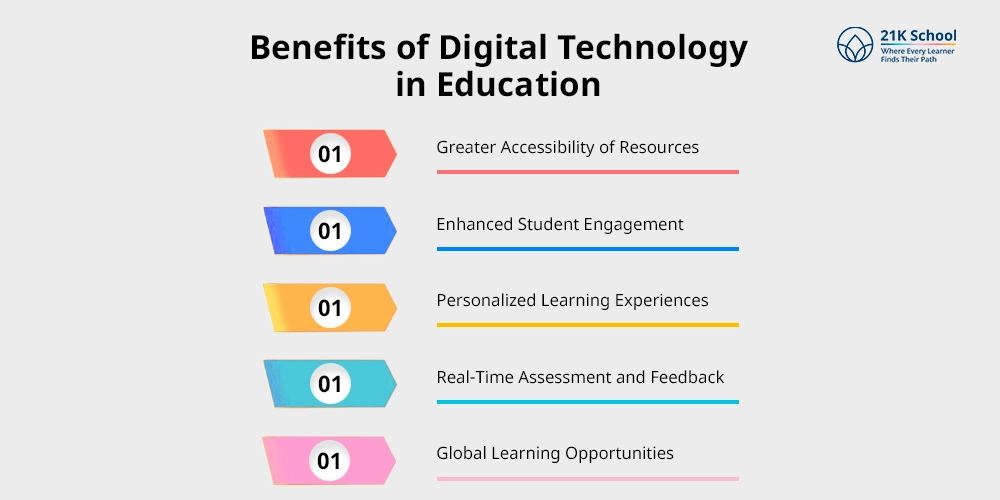
There are many benefits to digital technology that strengthen learning and engagement outcomes, in general. Some of them are given below:
1. Greater Accessibility of Resources
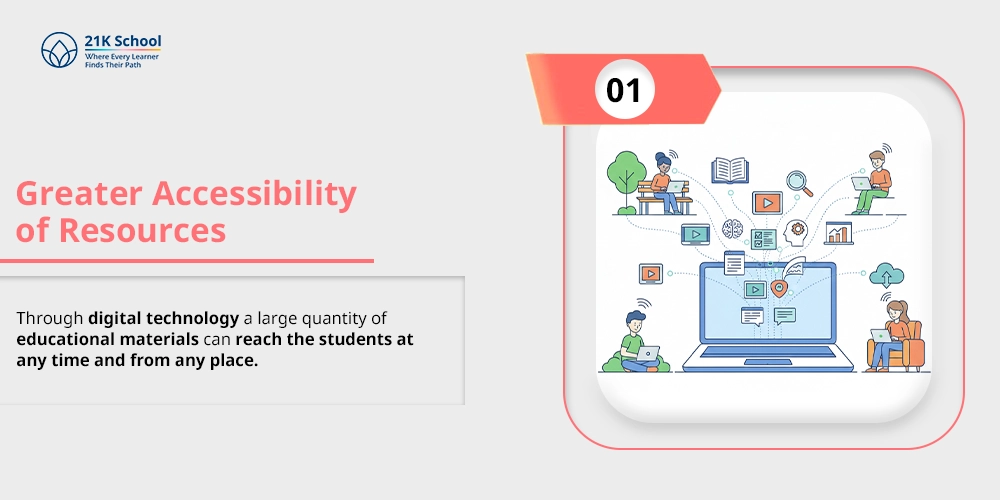
Through digital technology a large quantity of educational materials can reach the students at any time and from any place.
Textbooks and research articles can be accessed online as videos, simulations, and full courses, eliminating the need for textbooks.
This democratization of resources enables students across the world to access the same quality materials. Even, without relating it to their socio-economic status or where they were in the world.
2. Enhanced Student Engagement
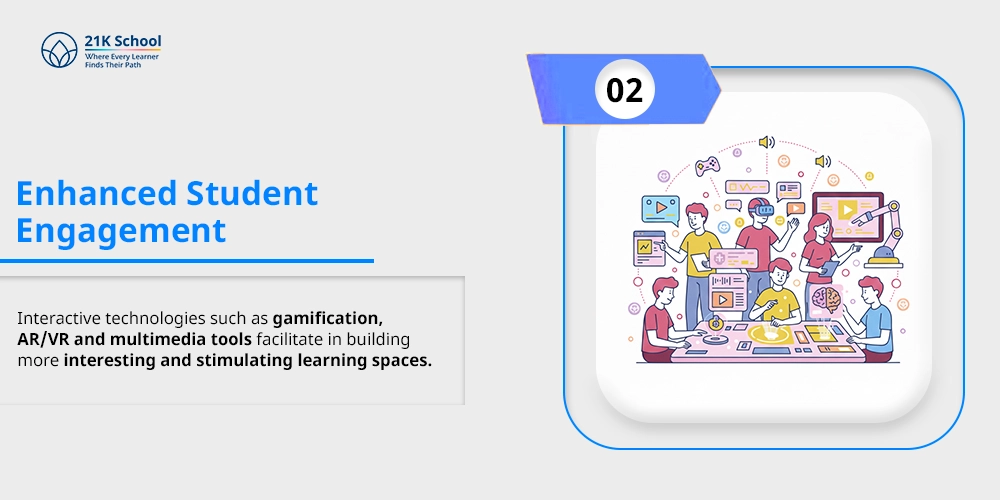
Interactive technologies such as gamification, AR/VR and multimedia tools facilitate in building more interesting and stimulating learning spaces.
When students are engaged with content through solving a problem in a game, they don’t feel studies to be boring.
Even by examining a virtual historical site, or by participating in online discussions, it is easier for them to remain interested. Quizzes and tests become more fun with the help of such tools as Kahoot.
They transform the mundane activity into a fun and stimulating competition.
3. Personalized Learning Experiences
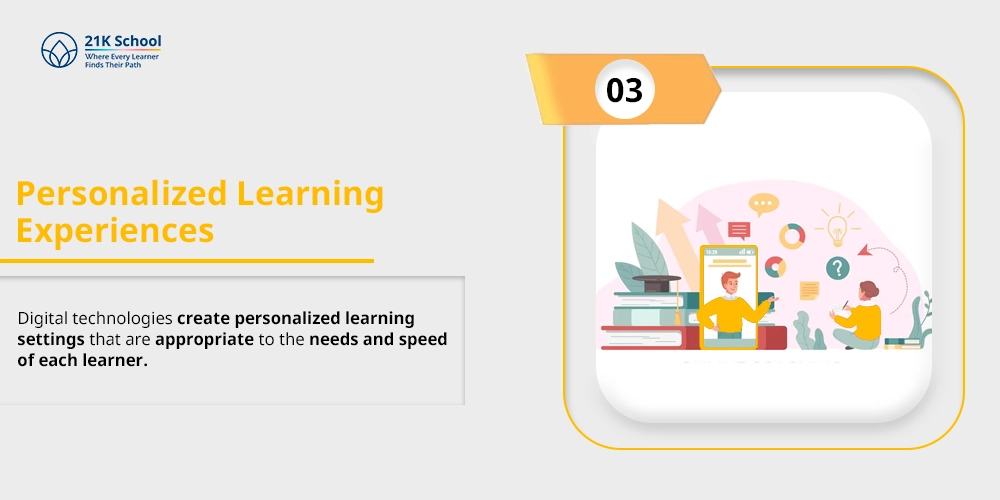
Digital technologies create personalized learning settings that are appropriate to the needs and speed of each learner.
Sites like DreamBox Learning and Squirrel AI employ artificial intelligence in studying a student’s progress and adjusting the material progressively.
This means that, no matter whether a student is performing well or needs additional help, he or she is pushed to his or her level.
The benefits of personalized learning like this is hard to implement in conventional classrooms where the one-size-fits-all approach to teaching is common.
4. Real-Time Assessment and Feedback
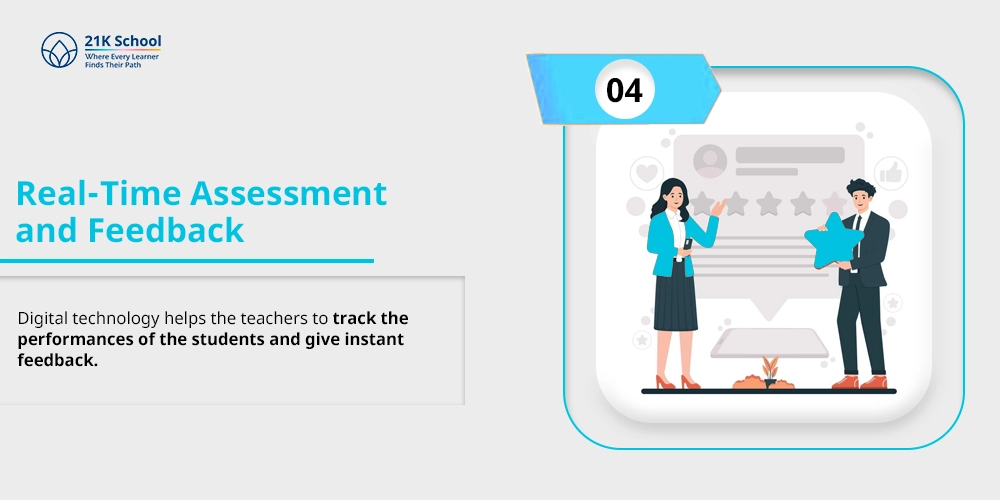
Digital technology helps the teachers to track the performances of the students and give instant feedback.
E-learning platforms, LMS, and educational apps can automatically mark assignments, quizzes and even essays. Thus, assisting students get immediate feedback on their work.
Such a timely evaluation enables rapid intervention when students are in distress, so that they get help prior to lagging behind.
Moreover, students can monitor their learning, set objectives, and self-reflect on their learning and become owners of their education.
5. Global Learning Opportunities
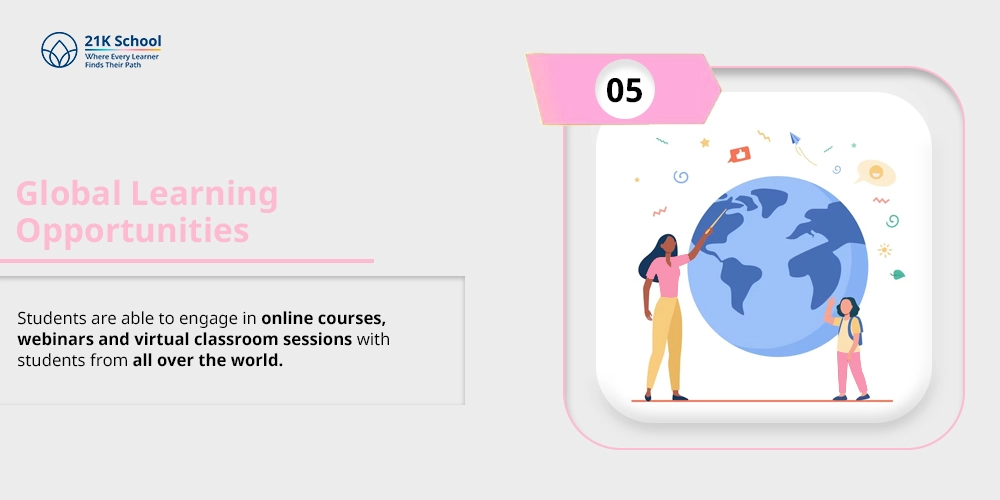
Technology in forms of digital technology overcomes the geographical barrier that has limited opportunities of education.
Students are able to engage in online courses, webinars and virtual classroom sessions with students from all over the world.
Global exchange of ideas and perspectives adds colour to the learning experience, where cross-cultural exchange and cooperation is the norm.
Platforms like Coursera and edX have enabled students from various countries to have access to classes from leading universities. It has made this field a playing ground for learners across the globe.
Disadvantages of Digital Technology in Education
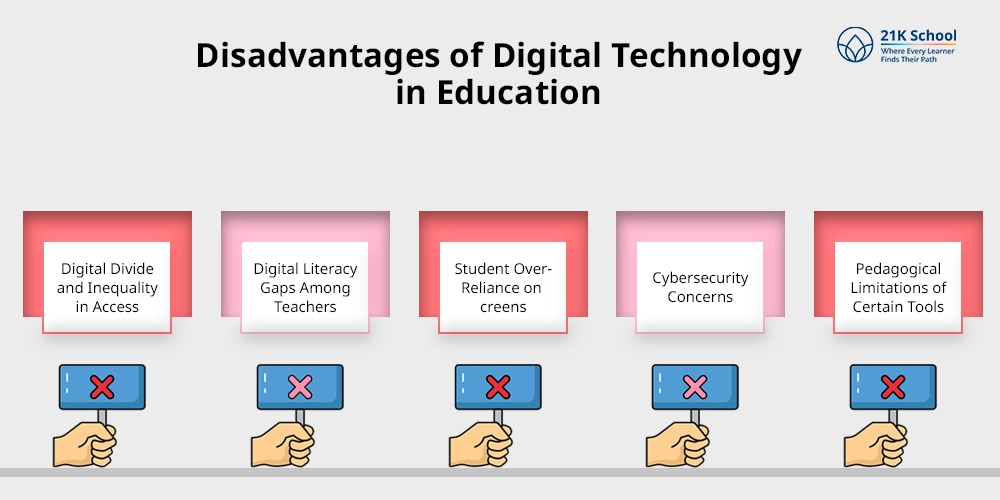
Here are the disadvantages of digital technology in education :
1. Digital Divide and Inequality in Access
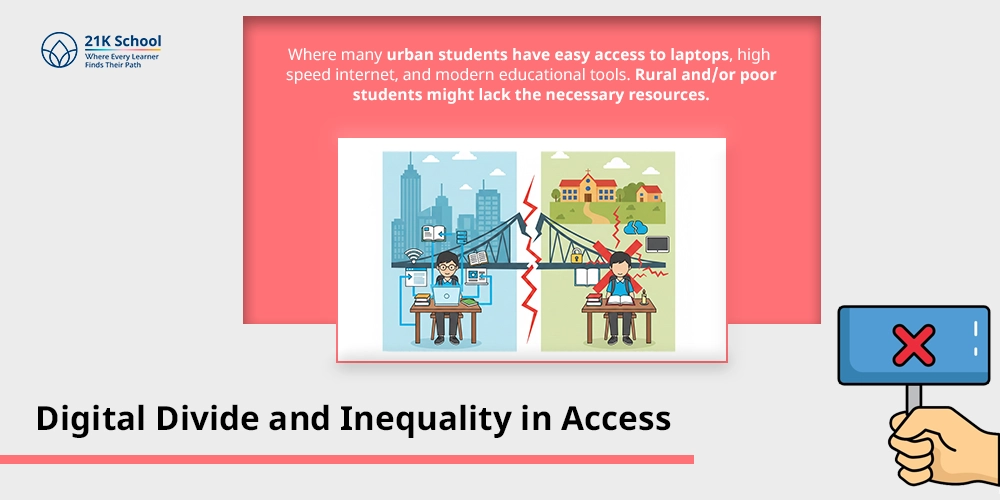
The greatest demerit of digital technology in education is the digital divide. And if you’re wondering, it is the gap between the haves and have nots in terms of technology.
Where many urban students have easy access to laptops, high speed internet, and modern educational tools. Rural and/or poor students might lack the necessary resources.
The inequity in access leads to a situation where some students are left. Hence, they cannot partake in online learning or have access to digital resources.
This dichotomy widens the existing educational gap and deprives disadvantaged learners with the opportunities of learning and growth.
2. Digital Literacy Gaps Among Teachers
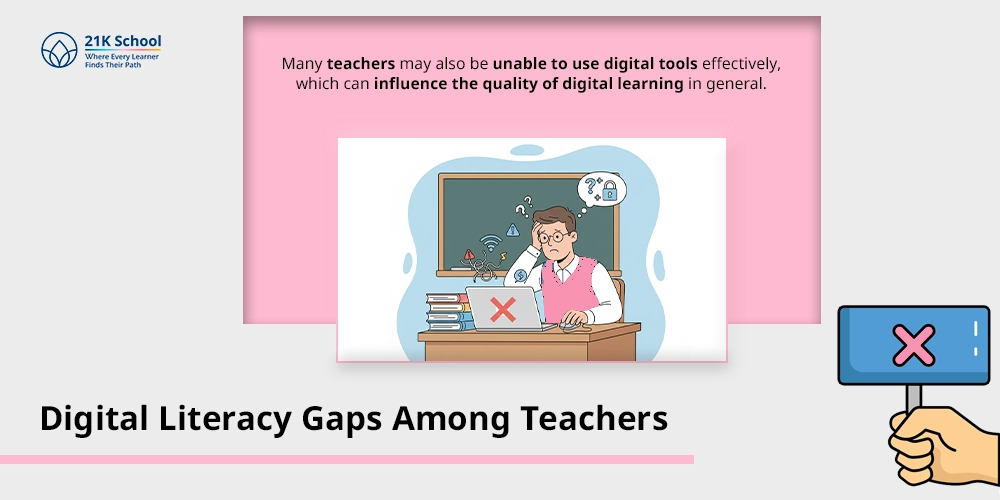
We see that students are growing up in a digital world. But still, not all teachers have gained the digital literacy to incorporate technology to their class in an efficient way.
Many teachers may also be unable to use digital tools effectively, which can influence the quality of digital learning in general.
The training programs for teachers have failed in integrating technology, thereby ill-preparing them to maximize the use of digital resources.
Untrained teachers may find it challenging to adopt learning management systems, virtual class, or AI-based teaching tools which may affect the students’ involvement and success.
3. Student Over-Reliance on Screens
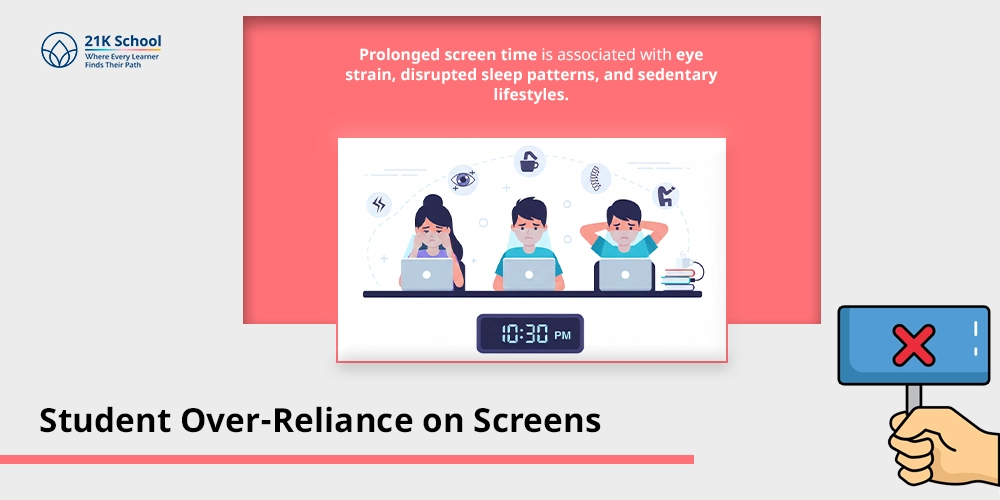
Another significant concern is the over-reliance on screens. As it can be seen that there is increasing use of tablets, smartphones, and laptops for educational purposes.
Due to it, students may spend too much time in front of a screen, potentially leading to negative health effects. Prolonged screen time is associated with eye strain, disrupted sleep patterns, and sedentary lifestyles.
Additionally, excessive use of technology for learning might reduce face-to-face social interactions and collaboration, essential aspects of the learning process.
Students who depend too heavily on digital devices may struggle to develop critical, interpersonal, and communication skills.
Here are some tips for managing screen time for kids
4. Cybersecurity Concerns
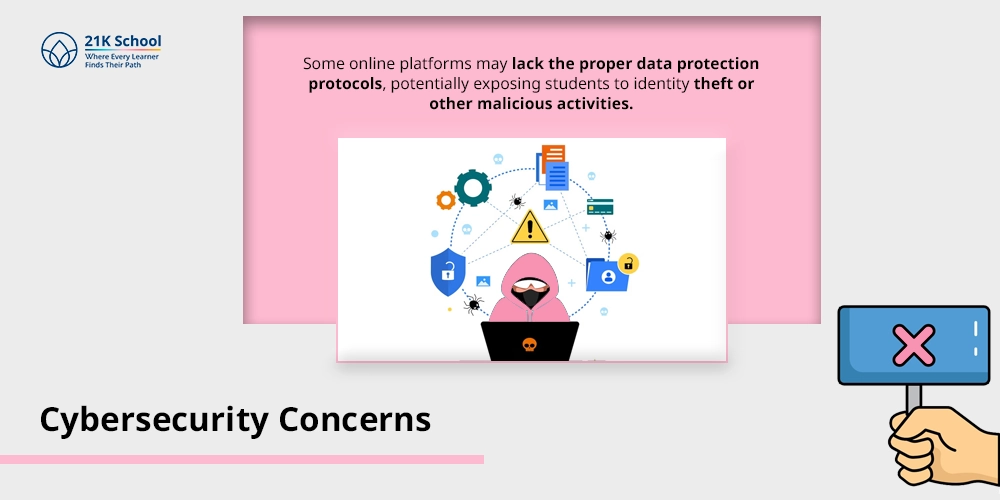
As education becomes more digital, cybersecurity becomes a growing concern. Schools, universities, and e-learning platforms store vast amounts of personal data, including students’ academic records, financial information, and health data.
This makes educational institutions prime targets for cyber-attacks.
Without proper cybersecurity measures in place, students’ sensitive information is at risk of being hacked or misused. Some online platforms may lack the proper data protection protocols, potentially exposing students to identity theft or other malicious activities.
Ensuring robust cyberhygiene is a critical aspect of digital education, and failure to address this issue can have serious consequences.
5. Pedagogical Limitations of Certain Tools
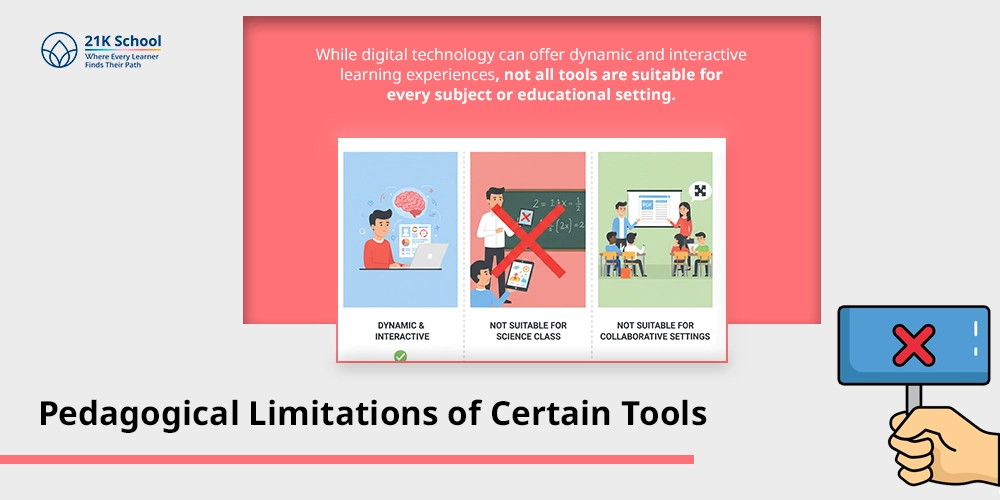
While digital technology can offer dynamic and interactive learning experiences, not all tools are suitable for every subject or educational setting.
Pedagogical limitations exist, especially when trying to use certain technologies in the classroom.
For instance, while virtual reality (VR) can provide immersive experiences, it may not be practical or cost-effective for all schools or subjects.
Besides, digital tools are usually designed with the focus on individual learning, while collaborative or group learning is disregarded.
This prompts the students to become isolated in their learning environment, thus limiting group discussions, team-based projects, and social learning .
The Future for Digital Technology in Education
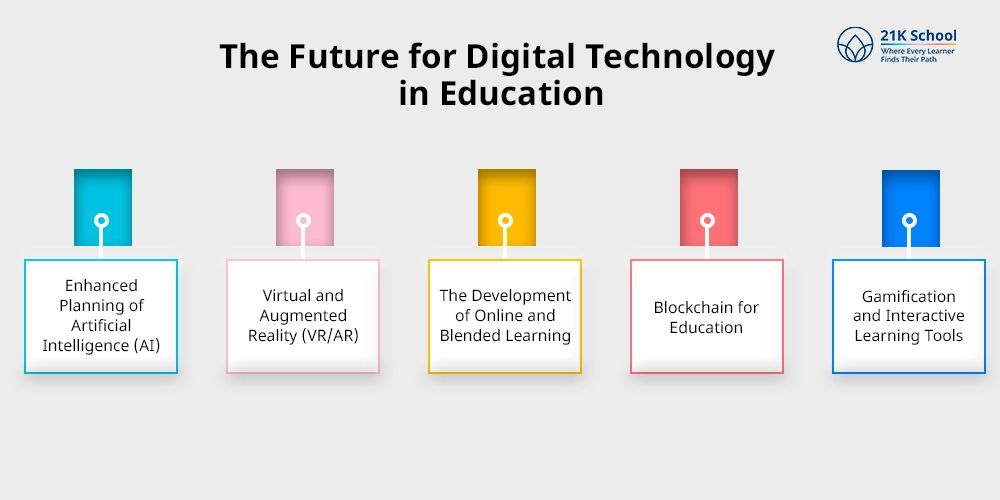
These challenges notwithstanding, the future of digital technology in education looks bright.
Technology remains to change and has the potential of revolutionizing the way of teaching and learning. In the following, there are the main trends that are defining the future:
1. Enhanced Planning of Artificial Intelligence (AI)
AI will increase its impact on personalization of education. Machine learning algorithms can support identifying the strengths and weaknesses of the students and adapt content to their requirements.
AI-based tools such as intelligent tutoring systems will be able to provide real time tailor-made feedback thus allowing more individualized paths for students.
2. Virtual and Augmented Reality (VR/AR)
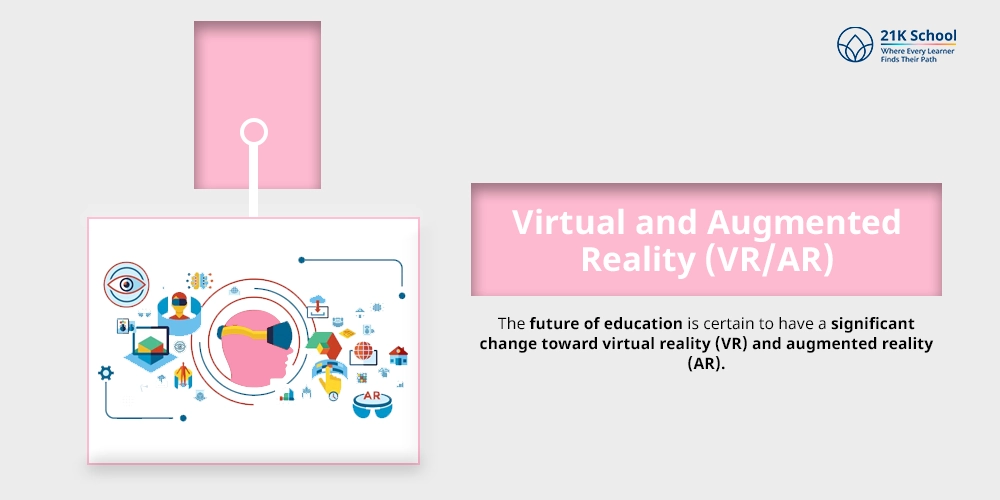
The future of education is certain to have a significant change toward virtual reality (VR) and augmented reality (AR).
These immersive technologies provide exciting options for teaching sophisticated content, ranging from studying ancient civilizations in VR to experiment simulations.
AR and VR will provide immersive learning environments and make hard topics easier and more interesting.
3. The Development of Online and Blended Learning
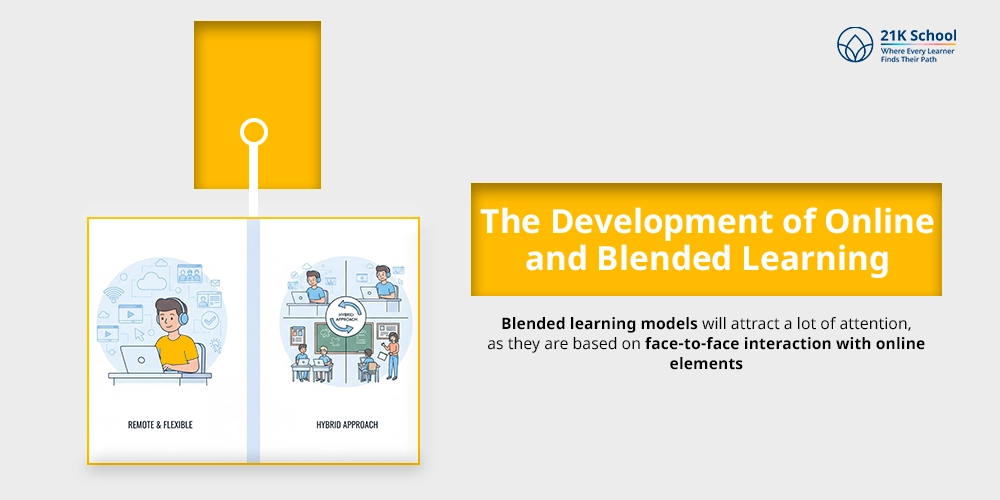
The move to online learning, which was hastened by the COVID-19 pandemic, is likely to keep increasing.
Blended learning models will attract a lot of attention, as they are based on face-to-face interaction with online elements.
This model enables students to learn at their own pace and allows more freedom for teachers to practice individualized teaching.
4. Blockchain for Education
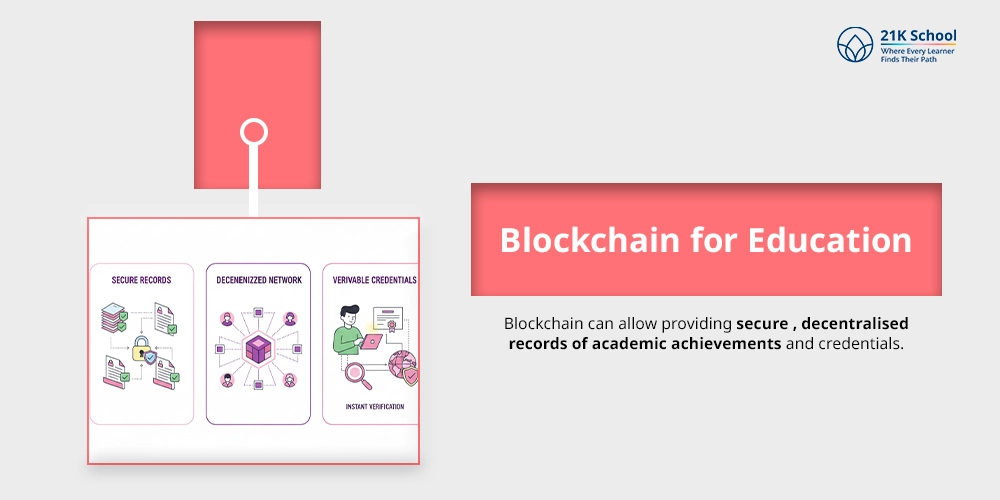
The potential to revolutionize the storage and certification of student records exists with blockchain technology.
Blockchain can allow providing secure , decentralised records of academic achievements and credentials.
This would make the process of verifying educational qualifications more transparent, efficient and fraud-resistant.
5. Gamification and Interactive Learning Tools
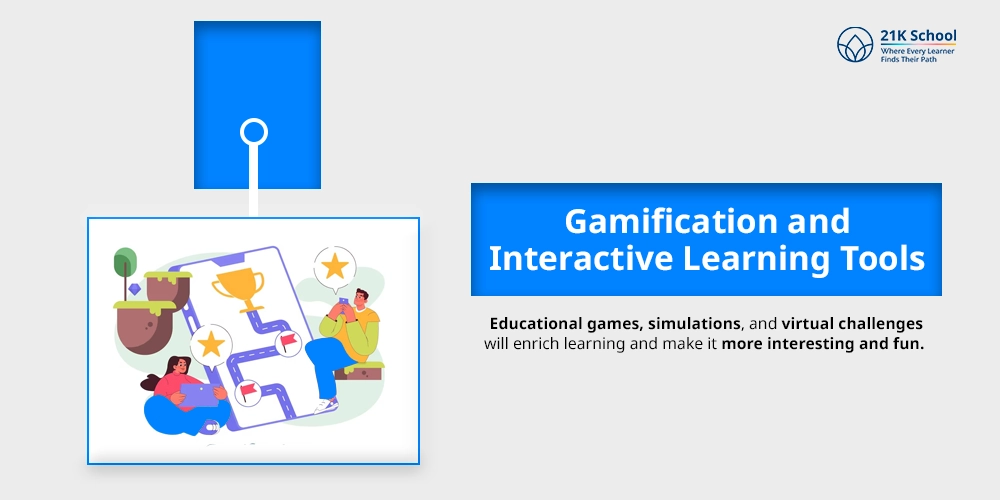
With the increasing demand for student engagement, one of the tools likely to be utilized more is gamification and interactive tools.
Educational games, simulations, and virtual challenges will enrich learning and make it more interesting and fun. It further helps in developing the students’ skills of critical thinking, solving problems, and teamwork.
Wrapping Thoughts
Although digital technology is a boon for education, there is a cost to pay which includes the various challenges that need to be addressed.
Redressing problems like digital divide, teacher readiness, and cyber security is essential in ensuring fair access and technology use.
The future of digital education is a hotspot for innovations. These are set to immersive learning and customize it for the individual student with AI, virtual reality, and blockchain.
Smart adjustment to present barriers and adoption of new technologies can build a more diversified, interesting, and responsible educational system. This can prepare the youngsters for the tech-driven world.

